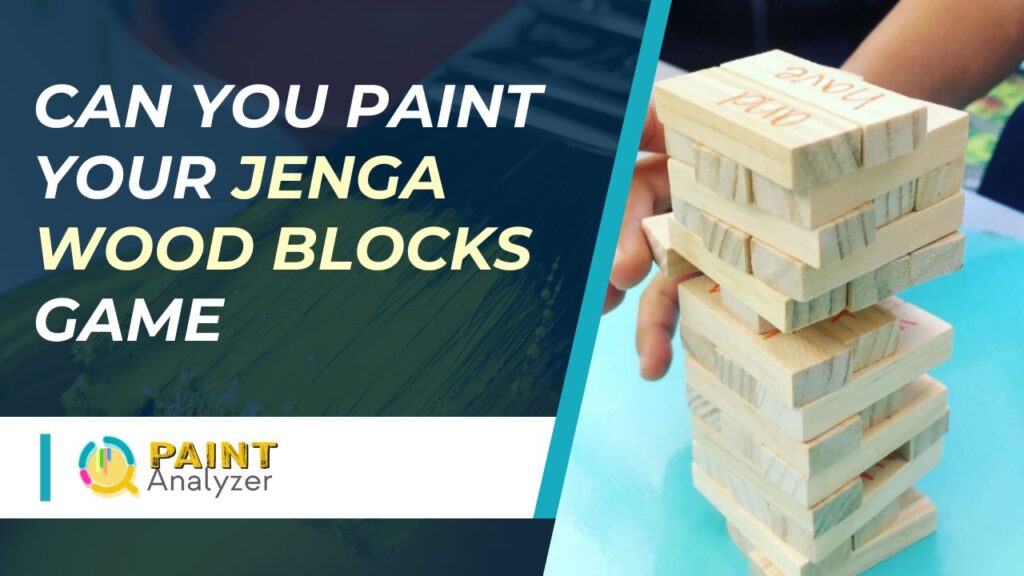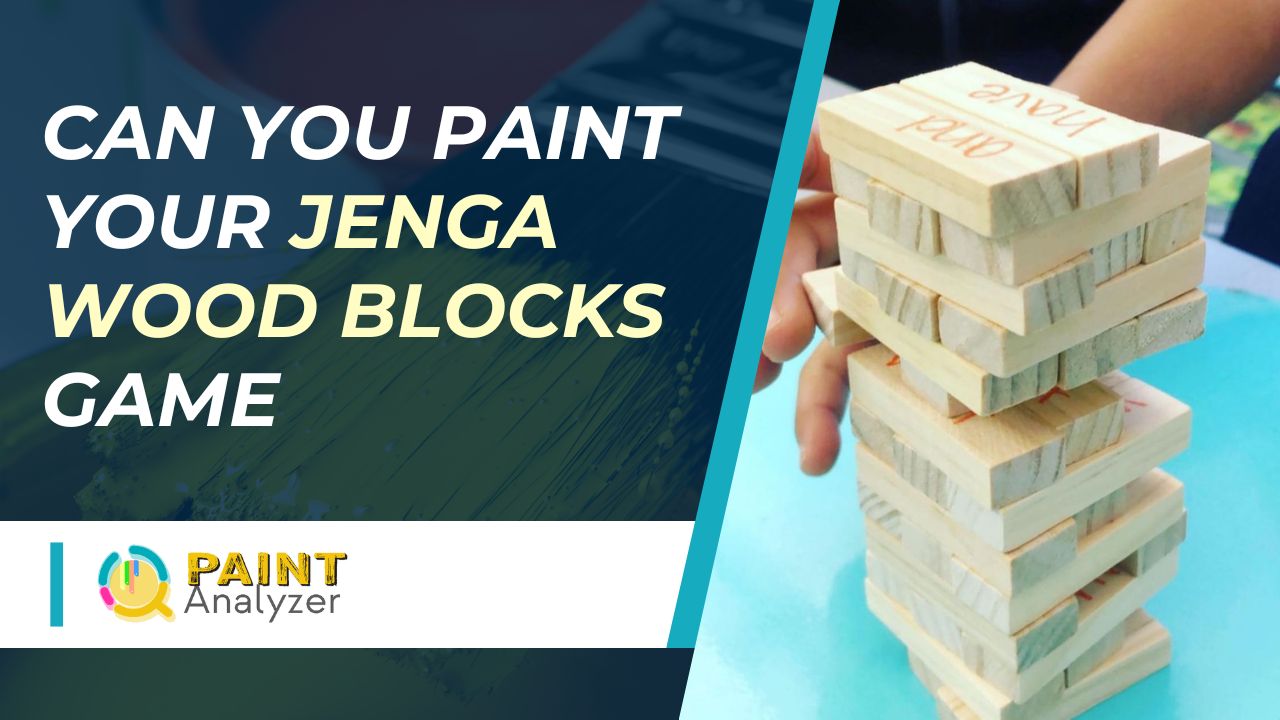Jenga is a classic block-stacking, stack-crashing game that has been a family favorite for over 20 years. The game is simple: players take turns removing one block at a time from the stack and then placing it back on top, careful not to topple the whole structure.
But what if you want to add a personal touch to your Jenga game? Can you paint the wood blocks without ruining the game?
Yes! You can paint your Jenga wood blocks game. Make sure to use non-toxic paint and seal the blocks with a non-toxic sealant after painting. I recommend using water-based paint, such as acrylic paint, and a water-based sealant, such as polyurethane.

Is It Possible to Paint Jenga Wood Blocks Game?
You can paint your Jenga blocks. However, it’s important to keep in mind that painting the blocks may affect the game’s playability. Paint can add weight to the blocks, making them more difficult to remove from the tower and increasing the chance of the tower collapsing.
Additionally, the paint may cause the blocks to stick together, making it harder to slide them out during gameplay. If you do decide to paint your Jenga blocks, it’s recommended to use lightweight paint and apply it sparingly to minimize any negative impacts on the game.
Because the added weight of the paint may cause the blocks to behave differently, which can affect the stability of the tower.
How to Paint Your Jenga Wood Blocks Game? A step-by-step guide
Jenga is a classic game that people of all ages can enjoy. If you’re looking for a fun and unique way to paint your Jenga wood blocks game, follow this step-by-step guide.
Step 1: Prepare the area
You must clear an area to work in and put down some old newspapers or a drop cloth to protect your surfaces.
Step 2: gather your supplies
To paint your Jenga blocks, you will need some acrylic paints, a paintbrush, and some clear sealer (optional).
Step 3: start painting!
Start by painting the sides of the Jenga blocks. You can use one color or multiple colors – it’s up to you! Once the sides are painted, you can paint the top and bottom surfaces of the blocks.
Step 4: let the paint dry
Once you finish painting, let the paint dry completely before moving on to the next step.
Step 5: (optional) Seal the blocks
You can seal the blocks with a clear sealer to help protect the paint job. Just apply a thin layer of sealer and let it dry completely.
And that’s it! Now you have a one-of-a-kind Jenga set that will surely be a hit on your next game night.
The best way to seal Jenga
Never fear if you love playing Jenga but hate how the blocks always seem to come apart! There is a way to seal your Jenga blocks so that they will stay together forever. Here’s what you’ll need:
- Jenga blocks
- Titebond II wood glue
- A toothpick or other small applicator
- A bowl of water -Paper towels
Prepare the work surface
Before beginning any project, prepare your work surface first. This will help ensure your project turns out exactly as you envision it.
Begin by placing a block on your work surface. If you are working with a material that can be easily damaged, such as wood, you may want to put a piece of scrap material under the block to protect your work surface from scratches. You are ready to begin your project once you have your block in place!
Spread glue on one side of the block
To attach the block to the wall, begin by spreading a thin layer of wood glue over one side of the block. Use a toothpick to help evenly distribute the glue. Once the glue is in place, firmly press the block against the wall. Hold it for a few seconds to allow the glue to set.
Dip the glued side of the block into the water
To ensure that your blocks are properly glued together, dip the glued side into the water for a few seconds. This will help to ensure that the blocks are correctly sealed together.
Repeat with each block
Repeat the process of gluing and watering the blocks on each side until all sides have been completed. This will ensure a strong bond between the blocks.
Allow blocks to dry overnight
To ensure that your Jenga blocks are properly dried and ready, allow them to dry overnight before using them in your next game. This will help avoid any potential issues arising from using wet blocks.
Can I Use Wall Paint to Customize My Jenga Wood Blocks Game?
Yes, you can definitely consider painting wood furniture with wall paint to customize your Jenga wood blocks game. However, make sure to properly prepare the wood surface and use a high-quality primer to ensure the paint adheres well. Additionally, consider using a protective top coat to help preserve the finish.
How Can You Make Painted Jenga Blocks Slippery?
One way to make your Jenga blocks slippery is to paint them with a clear lacquer. This will give them a smooth, slippery surface that makes it easy to move around.
You can also use a sanding block or sandpaper to roughen up the surface of the blocks before you paint them.
This will create a more textured surface that is still slippery but not as smooth. If you want to add color to your Jenga game, you can paint the blocks with acrylic paints. Just seal the paint with a clear lacquer so it doesn’t come off on your hands.
Jenga painting DIY technic
Conclusion
I hope that you enjoy these painting projects. The Jenga blocks are available in several designs, so you do not have to paint them all the same.
We are unsure if you have to paint the entire set, but we would say that painting the blocks in different colors adds to the interest. If you have never tried wood block painting before, we recommend trying it. It is a very fun and creative project to paint wood blocks.
But always remember safety first. Use child-safe paint, and do not allow your children to eat the paint. Thank you for choosing to read our article. I hope that you enjoyed it and found it helpful.
